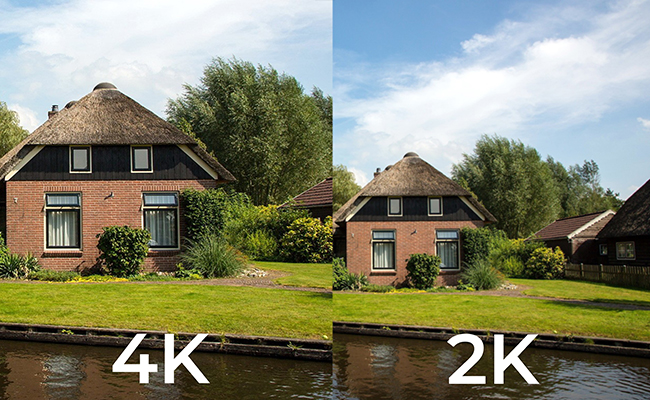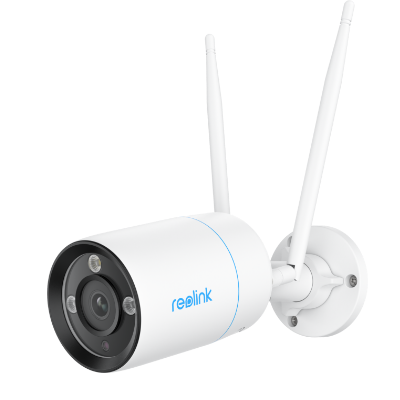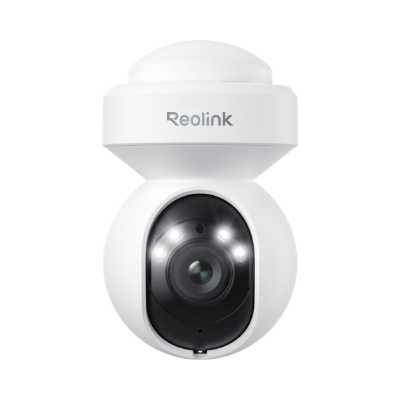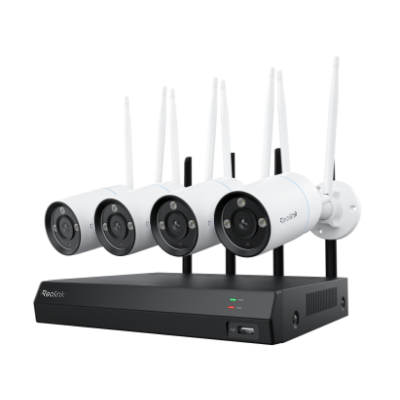2K vs 4K: Evaluating the Differences

If you've recently shopped for a computer monitor or camera, you may be familiar with terms like 2K and 4K resolution. While both names are used to describe high-quality display resolutions, there are notable differences between them.
This article aims to help you know the differences between both resolution types and, perhaps, help you choose. Dive in to learn more!
2K Resolution: What Does It Mean?
The industry standard pixel measurement of the 2K resolution is 2048 x 1080; however, the most common specification is 2560 x 1440, also known as Quad HD. The number of pixels in the width of the display is approximately 2000, which is why this resolution got the name “2K.”
When choosing a laptop or PC monitor, you will hardly ever find this resolution. 2K displays with a resolution of 2560 are the more common. Because of this, a lot of displays and gaming laptops advertise having a 2K/QHD resolution.
Although it is starting to get phased out by more advanced and higher resolutions, you can still find its application in technologies and devices like cameras, computer monitors, film and video production, gaming, and more.
Advantages of 2K resolution
-
Cheap and readily available: Despite being one of the higher resolution classes, 2K cameras (1440p) are pretty affordable. Also, since they have been around for a long time, a lot of 2K applications have been produced and are, therefore, easy to find.
-
Smooth performance: Compared to higher resolutions, processing content and rendering graphics in 2K resolution require less computing power. This leads to smoother performance, especially in gaming and applications like graphic design and video editing.
-
Efficient bandwidth and storage: When compared with higher resolutions like 4K and above, 2K resolution require less bandwidth and storage space. This means you can easily stream 2K footage from cameras and download content without worrying about storage space.
-
Compatibility with older technology: Since 2K has been around for longer, the technology works with much more hardware, especially older ones. This is not always true for higher resolutions like 4K, as they require more sophisticated and modern devices to work with.
Disadvantages of 2K resolution
- Lower quality: When measured against modern, higher resolutions, 2K falls behind in display quality. This can be a limitation in instances where images or videos with high levels of detail are required.
- Less future-proofing: As market trends shift towards higher resolutions, such as 4K and 8K, 2K cameras are getting less relevant and future-proof.
4K Resolution: What Does It Mean?
The term "4K" refers to resolutions with a horizontal pixel count of approximately 4000. There are two specifications of 4K; Industry-standard, which has a resolution of 4096 x 2160, and consumer-grade 4K, with a resolution of 3840 x 2160.
4K resolution has a higher pixel density (more pixels in a display) compared to 2K, which results in significantly sharper details in displays.
4K is the highest grade of resolution available in the consumer market today, and it is gradually becoming mainstream as content and devices are increasingly tailored to the resolution.
Advantages of 4K
-
High quality display: It provides enhanced visual clarity and impressive level of detail in images and videos. Unlike in smaller resolutions, zooming and larger screen sizes do not affect the footage quality of 4K images.
-
Futureproofing: Since it is a relatively recent technology, 4K quality will likely remain relevant and in use for a while since it works with most current tech and will probably be compatible with future hardwares.
-
Downscaling: 4K can be downscaled to lower resolutions without compromising quality. This means 4K content can be viewed on lower resolution screens with superior image quality.
Disadvantages of 4K
-
Cost: Being one of the highest resolutions in the market, 4K devices can be costly. However, as this resolution gains popularity, prices are also dropping. So it will likely be very affordable in a few years.
-
Storage and bandwidth challenges: Due to its high quality, 4K media can have large sizes that can be tricky to store. Streaming 4K content requires a bandwidth of at least 20mbps which is twice as much as 2K's.
What Are The Differences Between 2K And 4K?
As you may have already gathered, the significant difference between 2K and 4K is the quality and level of detail both offer. The table below summarizes the main differences between these two resolutions.
2K VS 4K: Which Is Better For You?
Picking between both resolution types depends on your budget and what you need. The obvious choice may seem like 4K, but that is not always so.
For game monitors
-
Accessibility:
The increased resolution of 4K monitors does limit the full range of support offered by PCs and graphics cards. In other words, a 2K display will provide more universal compatibility and accessibility. If you are buying a 4K screen, make sure your CPU and GPU can handle the additional resources required.
If you're playing the latest PC games, you may notice a decrease in refresh rate and response time on a 4K monitor compared to a 2K monitor. You may also experience a slight increase in latency when playing the latest PC games on a 4K monitor. -
Cost:
4K displays tend to cost much more than QHD displays. Under the same size, 4K monitor is about 1 times more expensive than 2K monitor -
Console game:
If you are a fan of consoler games, such as PlayStation 5 and Xbox Series X, we would recommend you to use 4K monitor. 4K video offers incredibly sharp and detailed visuals, providing a more immersive and lifelike experience.
For security cameras
Although 2K security cameras are sufficient for daily use, 4K is always better as surveillance footage will always feature sharper details. It can prove helpful when recording the license plate of a suspicious vehicle. But 4K cameras are more expensive than 2K. 4K security camera’s price is about $150, while 2K security camera’s price is about $50.
For TV
If you have a large screen size and plan to sit relatively close to the TV, the increased pixel density of a 4K TV can be more noticeable and immersive than 2K. However, 4K TVs will cost more. For example, most of Amazon's 2K TVs are under $300, but many 4K TVs are priced at $500, $1,000 or more.
For resin printer
The biggest advantage of a 4K resin printer is that it can significantly reduce printing time compared to a 2K printer. The reason for this is that the more powerful screen causes an increase in UV light, which cures the resin faster compared to the same light at a lower resolution. However, 4K printers sell for about $50-$250 more than 2K printers.
Exploring Resolution Comparisons with 4K
When it comes to choosing the right resolution for your display or camera, it's essential to understand the differences between various 4K options. These links provide valuable insights into different comparisons:
- 4K vs. 8K: A detailed breakdown of the distinctions between 4K and 8K resolutions.
- 4K vs. 5K: Learn about the nuances between 4K and 5K resolutions and when each might be ideal.
- 4K vs. 5MP: Discover the differences between 5MP and 4K in security camera systems.
- 4K vs. 2160p: Delve into the relationship between 2160p and 4K for video content.
- 4K vs. Blu-ray: Understand how 4K compares to Blu-ray in terms of video quality.
- 4K Resolution Explained: Get a clear explanation of the pixel count in 4K-resolution images.
These resources will help you make an informed decision when selecting the right resolution that suits your specific requirements.
4K Wi-Fi 6 Security Camera Recommendation
While the market is flooded with numerous 4K security cameras, it's worth noting that only a handful incorporate the advanced WiFi 6 technology. Cameras featuring WiFi 6 not only deliver optimal image quality but also ensure seamless real-time viewing without compromising network speed. In this section, we'll introduce you to a reliable option that perfectly merges the capabilities of 4K and WiFi 6 technology.
4K WiFi-6 surveillance camera - Reolink RLC-810WA
The Reolink RLC-810WA is a 4K WiFi 6 camera that combines high-quality 8MP Ultra HD resolution with advanced Dual-Band WiFi 6. This ensures clear and detailed footage while also making data transfer faster for a more stable and secure surveillance experience.
4K WiFi 6 Surveillance Camera
4K 8MP Ultra HD, Dual-Band WiFi 6, Color Night Vision, IP67 Waterproof, Smart Detection, Two-Way Audio, Built-in Siren.
4K smart PTZ outdoor camera - E1 Outdoor Pro
E1 Outdoor Pro is a 4K 8MP Smart PTZ WiFi Camera with Auto Tracking. Boasting Dual-Band WiFi 6, this camera ensures a reliable and stable connection for seamless streaming. With features like 3X Optical Zoom, 355° Pan, and 50° Tilt, the E1 Outdoor Pro offers a comprehensive surveillance experience with enhanced clarity and extensive coverage.
4K WiFi PTZ Camera with Auto-Tracking
4K 8MP Super HD, Smart Person/Vehicle Alerts, 355° Pan & 50° Tilt & 3X Optical Zoom, Auto Tracking, Color Night Vision.
4K Wi-Fi 6 security camera system - RLK12-800WB4
The RLK12-800WB4 stands out as a powerful 4K security kit equipped with WiFi 6 technology for those seeking an all-encompassing solution. Beyond ensuring seamless real-time viewing and playback, this advanced kit incorporates person/vehicle/animal detection, adding an intelligent layer to your surveillance system. By discerning specific movements, it allows you to focus on critical events, minimizing false alarms and providing a heightened level of security.
4K Security Kit with Next-Gen WiFi 6
4 pcs 4K Ultra HD Security Cameras; Dual-Band WiFi 6; 2TB HDD 12-Channel NVR for 24/7 Recording; Peron/Vehicle/Animal Detection; IP67 Weatherproof.
Recommended Security Cameras for Sharper Than 4K
When seeking security cameras with resolutions sharper than 4K, it's essential to prioritize advanced features and exceptional clarity. Among the top choices in this category is the Reolink Duo 3 PoE. With its groundbreaking 16MP Ultra High Definition resolution, it offers unparalleled image quality, ensuring every detail is captured with precision.
Additionally, its 180° panoramic view provides comprehensive coverage of the monitored area. Equipped with motion tracking technology and color night vision, the Reolink Duo 3 PoE ensures effective surveillance even in challenging conditions, making it an ideal recommendation for those seeking superior security solutions with resolutions sharper than 4K.
Groundbreaking 16MP Dual-Lens PoE Camera
16MP UHD, Dual-Lens, Motion Track, 180° Wide Viewing Angle, Power over Ethernet, Color Night Vision.
FAQs
Can you watch 2K content on a 4K display?
Yes, you can watch 2K content on a 4K display. Most 4K displays are designed to handle lower-resolution content effectively. When you play a 2K video or any content with a lower resolution on a 4K display, the display will automatically upscale the content to its native resolution.
Will I notice a difference between 2K and 4K?
The noticeable difference between 2K and 4K depends on screen size, viewing distance, content type, and personal visual acuity. If you have a large screen, sit closer, and frequently consume native 4K content, you are more likely to appreciate the enhanced detail and sharpness of 4K resolution.
3. Is 4K better than 2K?
Whether 4K is worth over 2K is subjective and depends on your specific requirements. If you value the utmost visual fidelity and future-proofing and have the budget to accommodate it, upgrading to 4K can enhance your viewing experience.
However, if cost is a primary concern or the visual benefits of 4K are less influential in your particular usage scenario, sticking with a 2K display can still offer a satisfying level of image quality.
Conclusion
The choice between 2K and 4K is ultimately yours to take. Factors such as intended use and budget often affect our decisions. Both resolutions offer their own benefits and can enhance your visual experience in different ways.
Hopefully, this guide has helped you understand the difference between 2K and 4K resolutions. If you have other questions, please share them with us and comment below!
Search
Be in the Know
Security insights & offers right into your inbox




